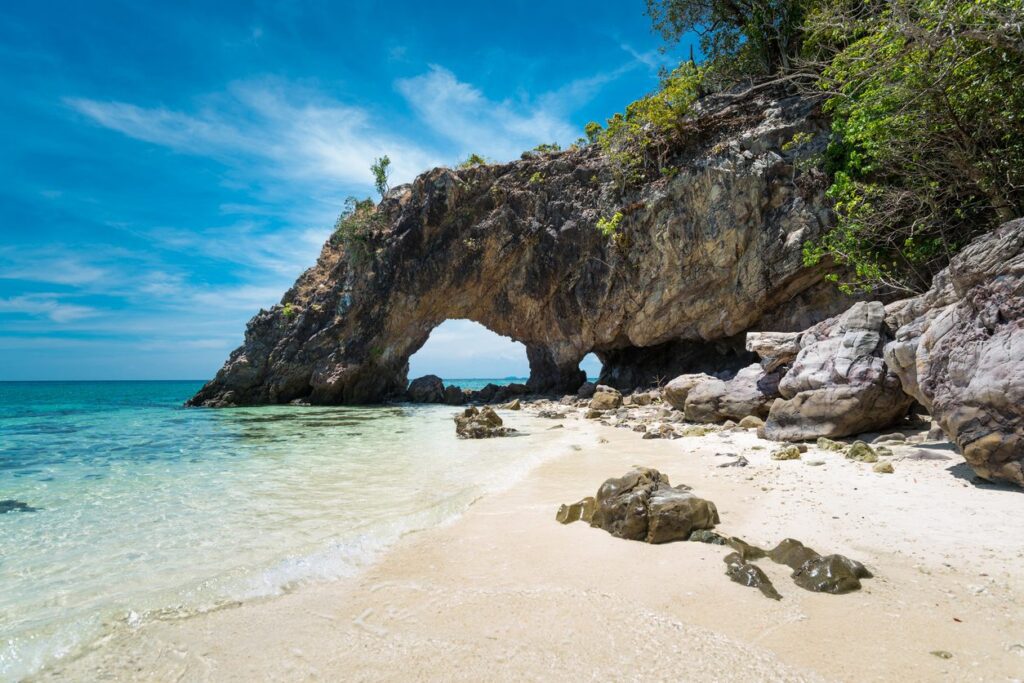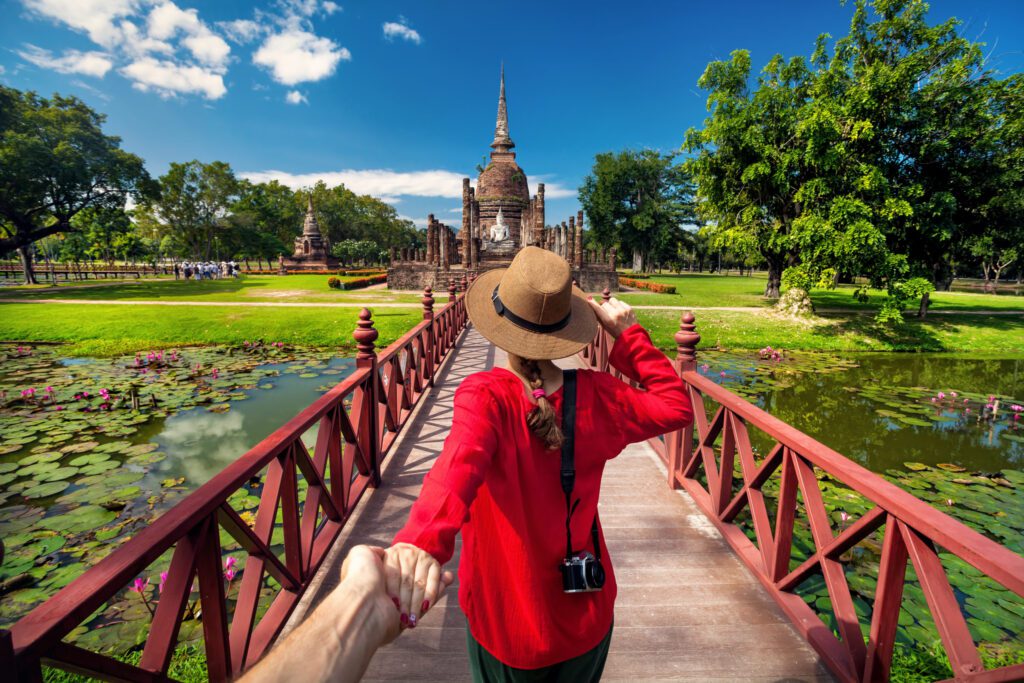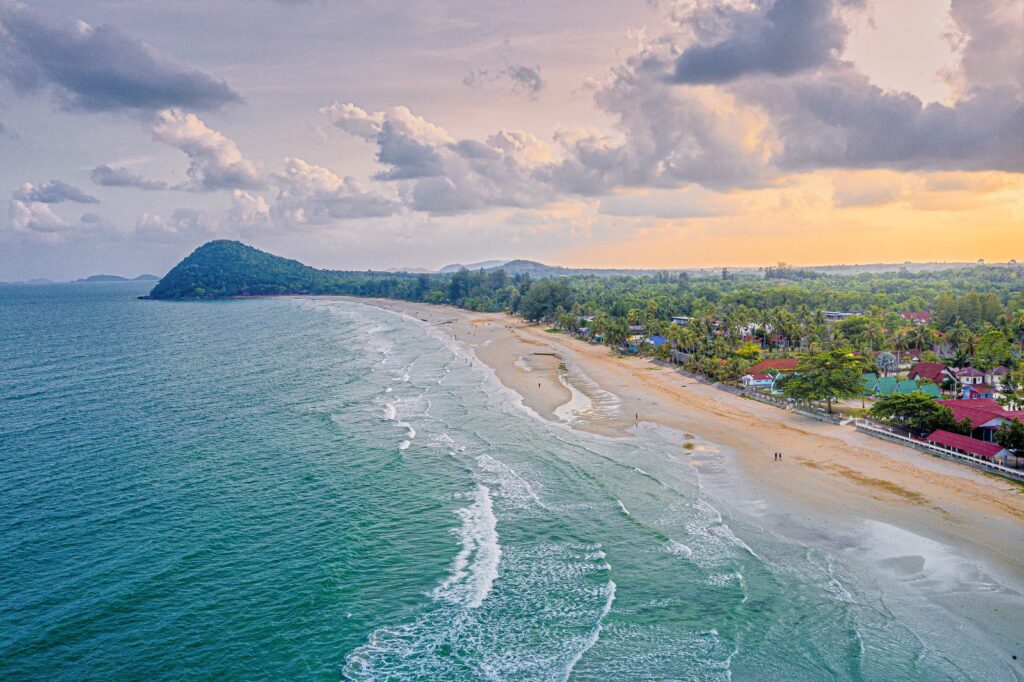a guide to Lampang
A small and peaceful county in the north, Lampang is a sanctuary for culture buffs and those who enjoy the slow life. Being rich in cultural heritage, Lampang is a destination that is worth a visit.
There are several places to visit in Thailand, but few venture into less-known provinces like the ones located in the Eastern Lanna region. The high-altitude of the legendary Lanna Kingdom, including Lampang, Phrae, and Nan provinces, spreads out into Thailand’s northeastern corner, connecting with Laos’ remote border and ancient Luang Prabang in the east. The teak forests, ethnic culture, craftsmanship, religious arts, and scenic marvels make this part of Thailand well worth exploring. Eastern Lanna offers the opportunity to disengage from Chiang Mai’s urban tempo and indulge in the tranquility of nature. There are temples and historical areas to explore, delicious foods to taste, and a stretch of river to navigate.
Getting there
Traveling to Lampang is fairly accessible. There are daily flights operating roundtrip from Don Mueang International Airport and Lampang Airport.
The Northern railway line (Bangkok – Chiang Mai) passes through Lampang. A trip from Bangkok to Lampang (854 Baht – 1,034 Baht,$27.20 USD – $32.94 USD) takes 10-12 hours, while a Chiang Mai – Lampang trip (23 Baht, $0.73 USD) is about two hours.
Lampang connects to other parts of Thailand’s North and beyond via public bus lines, and most buses stop at the Lampang bus terminal (8-12 am). Many buses that go from Bangkok Bus Terminal (Chatuchak) to Lampang (8-9 hours/450 Baht, $14.33 USD).
Getting around
Just like other parts of Thailand’s upcountry, Lampang doesn’t have a taxi or tuk-tuk. The commuters and visitors rely on horse-drawn carriages, motorcycle taxis, and green and yellow “songthaew” vehicles, which you can hire like a tuk-tuk.
Car rentals are available at Lampang Airport if you want to drive in Lampang. You’ll need a valid driver’s license to rent a vehicle.
Things To Do in Lampang
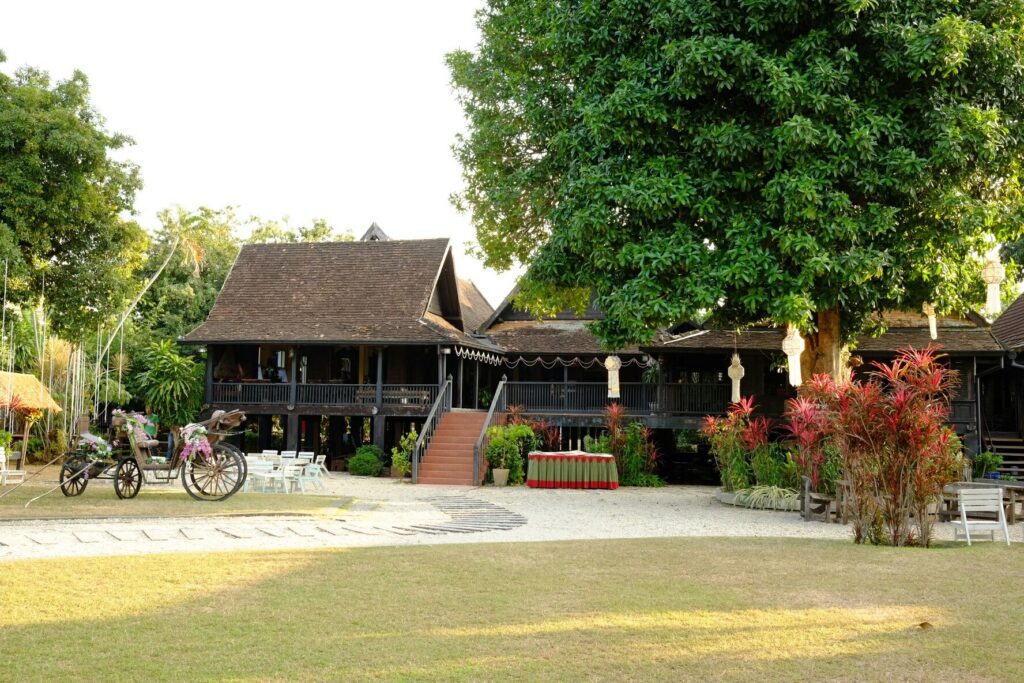
The British were commissioned to export teak from Thailand in the 19th century and brought the Burmese to help with their business since some Burmese master loggers earned a fortune from the teak industry. Married to local women, they built lavish mansions and contributed to Buddhism. Baan Sao Nak, meaning the “house of many pillars,” tells the tale of the wealth of Lampang’s teak barons. Built in 1895 by wealthy and respected Burmese log trader Maung Chan Ong, Baan Sao Nak boasts 116 square teak pillars. The traditional wood house served as the family home for decades before it turned into a local museum. The entire house is furnished with Burmese and Thai antiques and pays testament to the lavish life of Lampang.
Baan Sao Nak is a 15-minute drive from the Nakhon Lampang railway station.
5 Radwattana Rd., Mueang Lampang, Lampang
Opening Hours: 10 am-5 pm
Prices: 50 Baht ($1.59 USD)
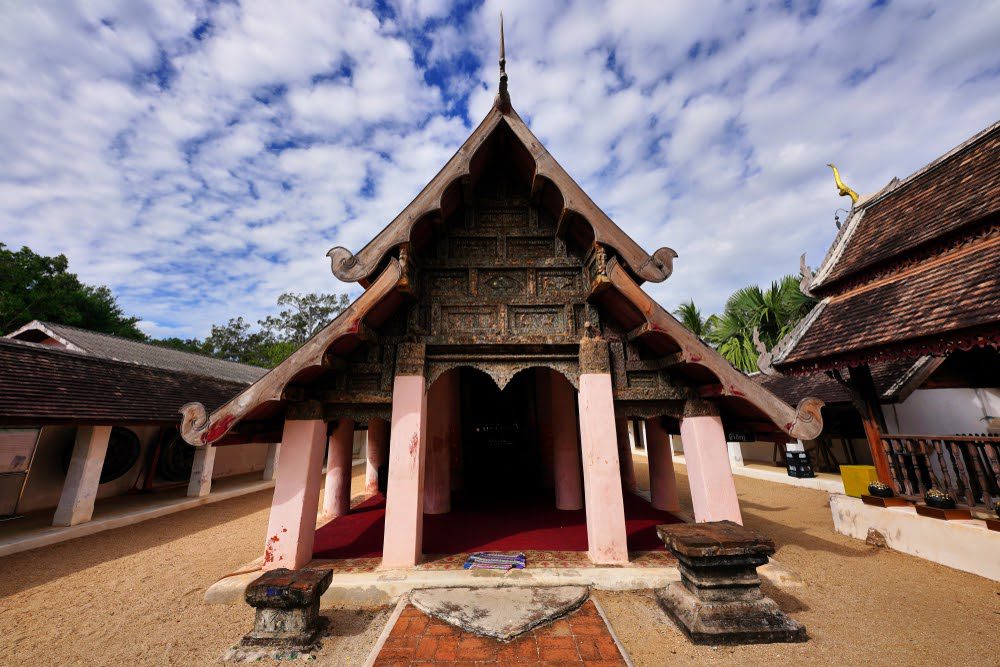
Small yet graceful, Wat Lai Hin is the province’s crown jewel. It was constructed in 1683 by a prince and his followers hailing from Keng Tung. The small chapel hall with its multi-tiered roofs makes a bold statement about Lampang architecture being more elaborate than Chiang Mai architecture. With ornate plasterwork depicting little angels and guardians, the arched entrance was the archetype for the opening of Wat Phrathat Lampang Luang – the city’s most sacred pagoda. This beautiful archway has a significant influence on the design of the Dhara Dhevi Hotel in Chiang Mai. Outside the chapel hall, a tall pillar with a swan on top pays tribute to the Burmese influence.
Wat Lai Hin is a 35-minute drive from the City of Lampang.
234 Moo 2 Sala, Ko Kha, Lampang
Opening Hours: 8:30 am–6 pm
Telephone: +6654 274 006
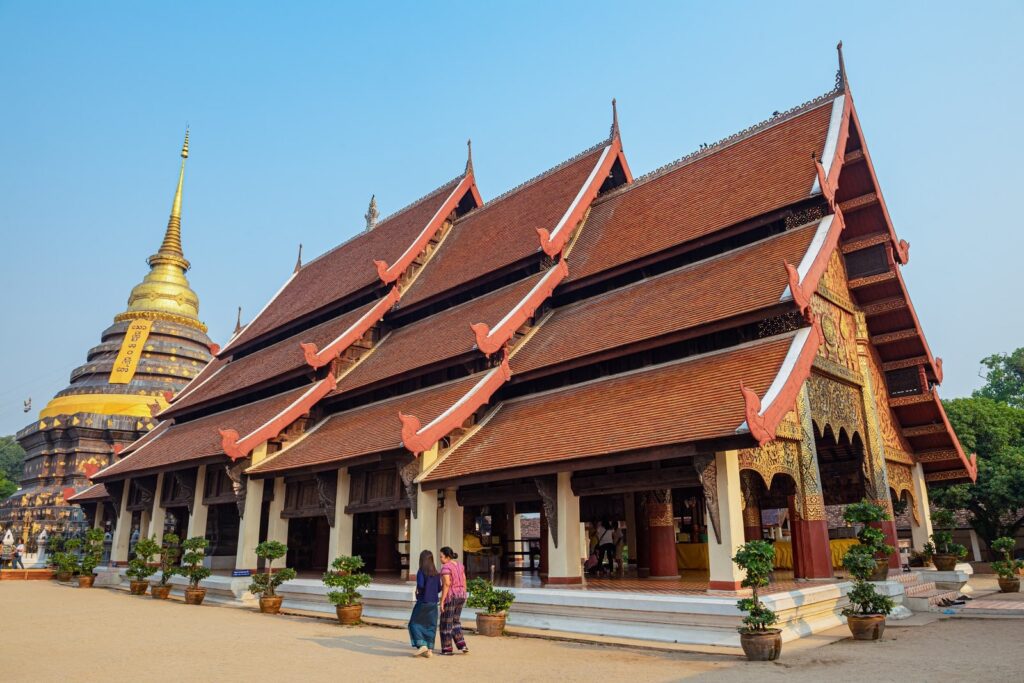
For a history buff, a trip to Lampang wouldn’t be complete without a visit to Wat Phra That Lampang Luang. You’ll have quite a climb up the Naga stairway to reach the main entrance, which is inspired by the arched gateway of Wat Lai Hin. The temple is worth checking out for its exceptional plaster designs. The open-sided chapel hall houses a bronze Buddha statue called Phra Chao Lan Thong. You can find the gilded pagoda in the Lanna architectural style that contains a Holy Relic of Lord Buddha at the end of the hall. The temple has beautiful murals on wooden walls that are the oldest in the North. The murals tell the tales of Jataka through paintings of serpents, elephants, and Lord Buddha, as well as the stories of Ramayana and some Lanna folktales.
Wat Phra That Lampang Luang is a 25-minute drive from the City of Lampang.
234 Moo 2 Sala, Ko Kha, Lampang
Opening Hours: 8:30 am–6 pm
Telephone: +6654 274 006
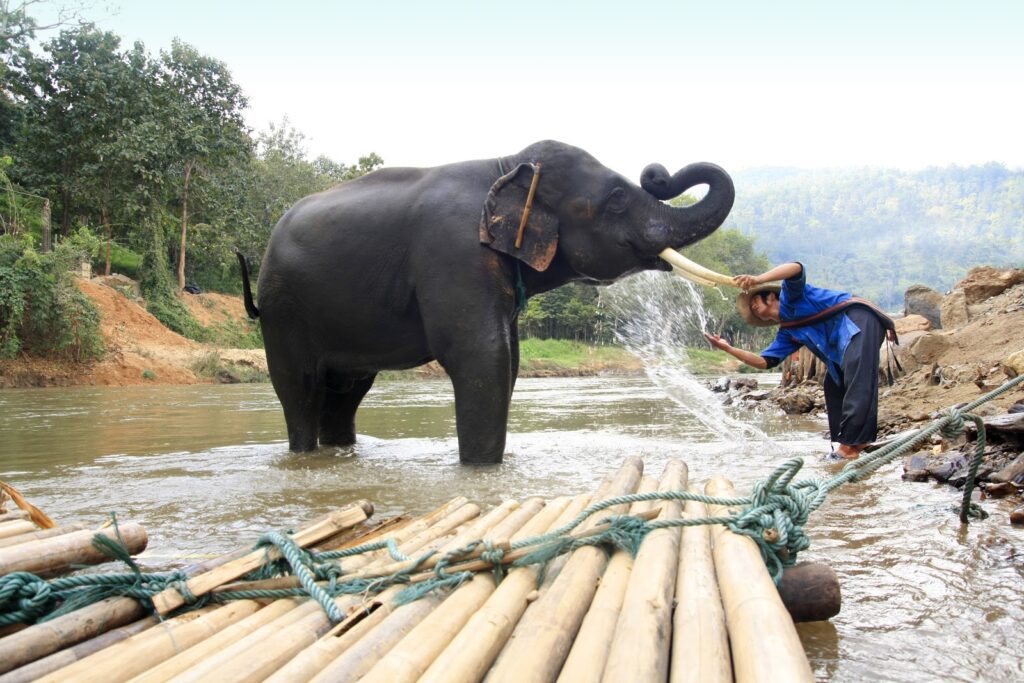
Located in the green forest sanctuary between Lampang and Chiang Mai, the Thailand Elephant Conservation Center (TECC) was founded in 1993. It’s a retirement home for domesticated Thai elephants as well as a research and conservation center for Asian elephants. The TECC operates onsite medical care and manages Thailand’s first mobile clinic, treating needy elephants free of charge. Providing care and comfort to the pachyderms, TECC draws the visitors to the center with a variety of activities. For those who want to get to know the elephants up close and personal, they can enroll in mahout courses ranging from one-day to one-month programs.
Thailand Elephant Conservation Center is a 30-minute drive from the City of Lampang.
Hang Chat, Lampang
Hours: 8 am-4:30 pm
Telephone: +6654 829 322
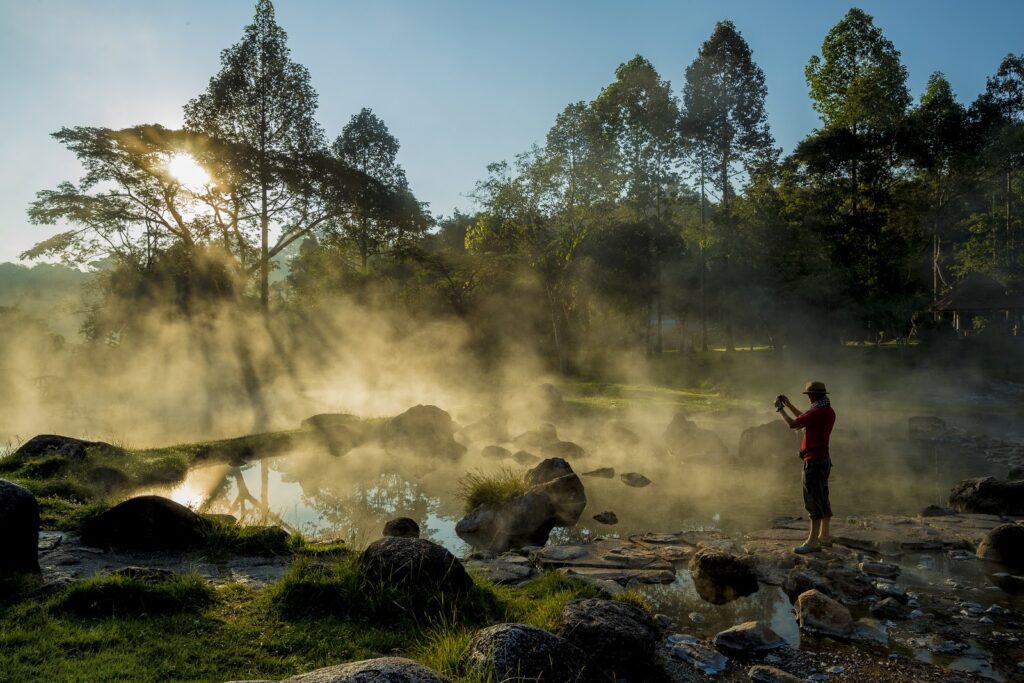
Tucked away in the northern part of Lampang, Chae Son National Park is known for its natural hot spring and nature’s beauty. The nine natural hot springs in the national park make amazing scenic views when rays of light and smoke exchange a dap over the water in the morning. However, the hot springs are too hot to soak in but can use it for making Onsen Tamago. Visitors would put raw eggs in the thermal water until they are cooked. The eggs, boiled in water with sulfur and minerals, would have a distinctive smell of sulfur. The white egg would not set while the yolk is very creamy.
At the park, you can take a casual stroll along the waterfall trail, soak in the bathhouses with large pools and private huts, or go for a Thai massage to relieve muscle pain. It also offers a campsite with breathtaking views of the evergreen forest right next door. Campers can rent a tent and camping gear from the park. It is also one of the best spots to enjoy stargazing if you’re into this nighttime activity.
Chae Son National Park is 72 kilometers north of the City of Lampang.
Pan district, Lampang
Admission: 400 Baht ($12.74 USD)
Telephone: +6689 851 3355
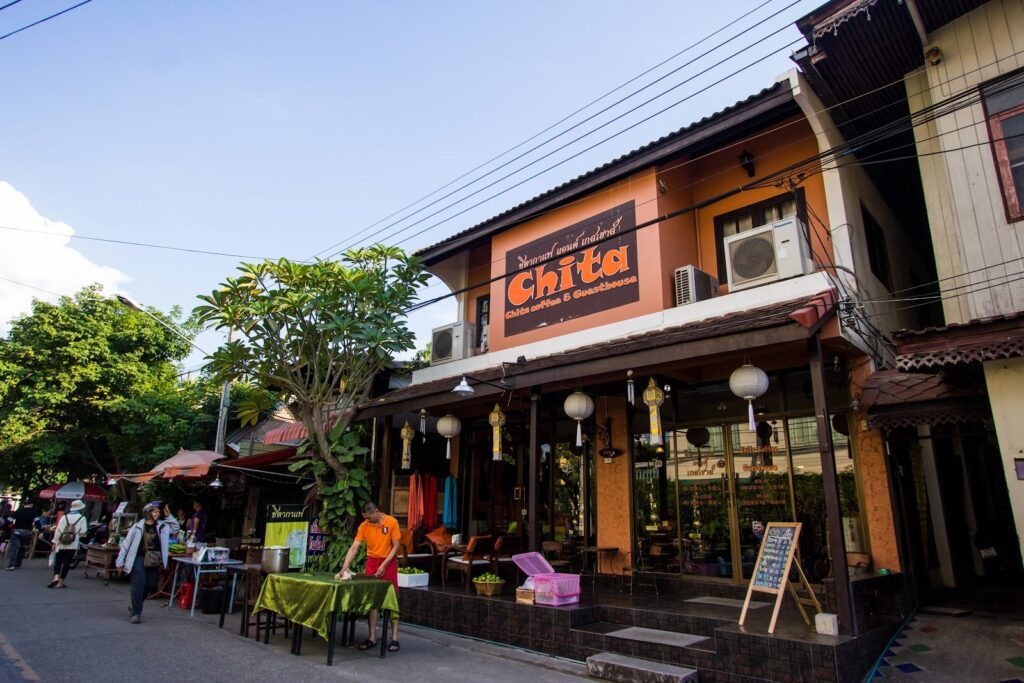
Stroll along the historical strip of Kad Kong Ta old marketplace and enjoy the distinct atmosphere of vibrant culture and heritage. Perched over the Wang River, Kad Kong Ta is loved by tourists and locals for its shopping and dining experiences. In the late 19th century, Kad Kong Ta was founded and served as a commercial and trade center among Thai, Chinese, Burmese, and European traders. Old teak mansions and heritage buildings on both sides of the street reflect the time when Lampang was the center of the thriving teak industry. Most heritage houses are restored to bring back its former glory. The legendary community has reinvented itself as a trendy neighborhood with arts and crafts spaces and cafes, including Amara Brew & Bistro (+6681 530 8017) and Hug at Home, a restaurant and small hotel within the Lampang Art Center. On weekends, the historic lane transforms into a pedestrian street to draw in artisans, shoppers, designers, and musicians. Check out Moung Ngwazin Building, one of Thailand’s award-winning gingerbread houses.
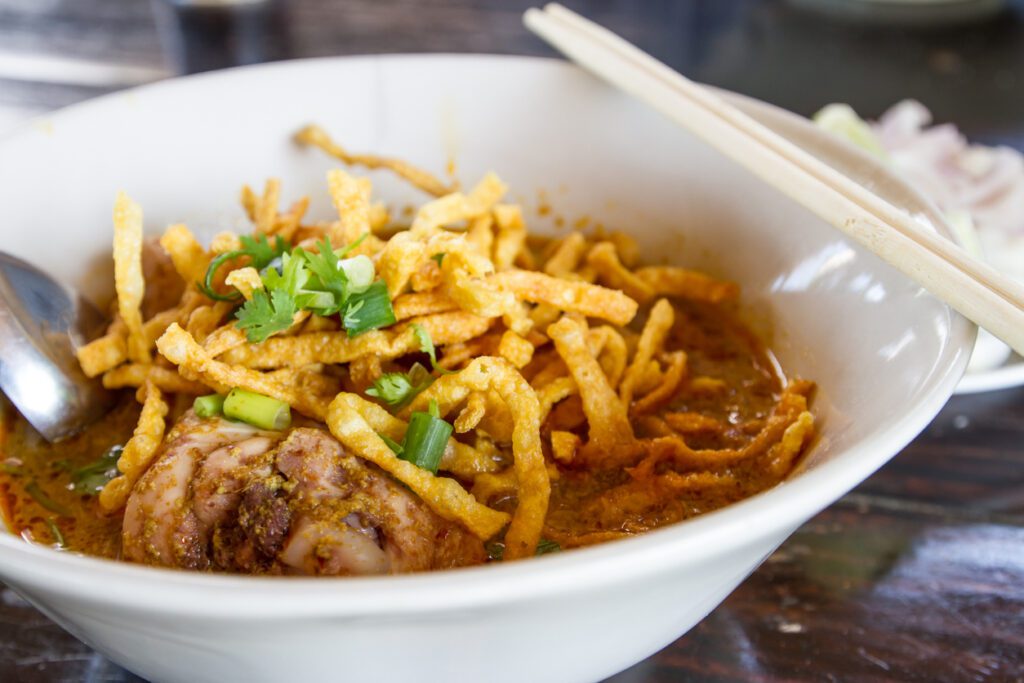
Khanom Jeen Pa Boon Sri
It’s nearly impossible to secure a lunch reservation at Khanom Jeen Pa Boon Sri – a local restaurant next to the historic Rassada Phisek Bridge. The restaurant is known for its classic Northern Thai noodles. They serve a bowl of “Khao Soi” egg noodle with a rich, creamy flavor from a stew of tender braised chicken. “Khanom Jeen Nam Ngiaw” is another dish that reflects Burmese influence in Lampang’s cooking. A bunch of skinny fresh noodles is brimmed with meaty and spicy tomato broth accompanied with minced pork and ribs. Food is tasty here, and most people eat more than they can.
Khanom Jeen Pa Boon Sri, Talad Gao Rd, Mueang Lampang, Lampang
Opening Hours: 9 am-3 pm
Saengwa
Tucked away in Sanambin Road in downtown Lampang, Saengwa is a small Thai restaurant that makes people coming back for more authentic Thai food. Most dishes on the menu are reinvented from classic and long-lost recipes. Try “Kaeng Ranjuan” – red sweet and sour curry with grilled pork (or beef) and aromatic herbs. There’s also pan-fried mackerel (served with chili paste and set of steamed vegetables) and “Saengwa” shrimp salad with lemongrass and kaffir lime dressing. The restaurant also serves classic European dishes like confit duck with Thai northern chili dip with egg yolk confit and rice cracker.
Saengwa, 9/3 Sanambin Rd, Hua Wiang, Mueng Lampang
Opening Hours: 11 am-10 pm
Telephone: +6654 010 197
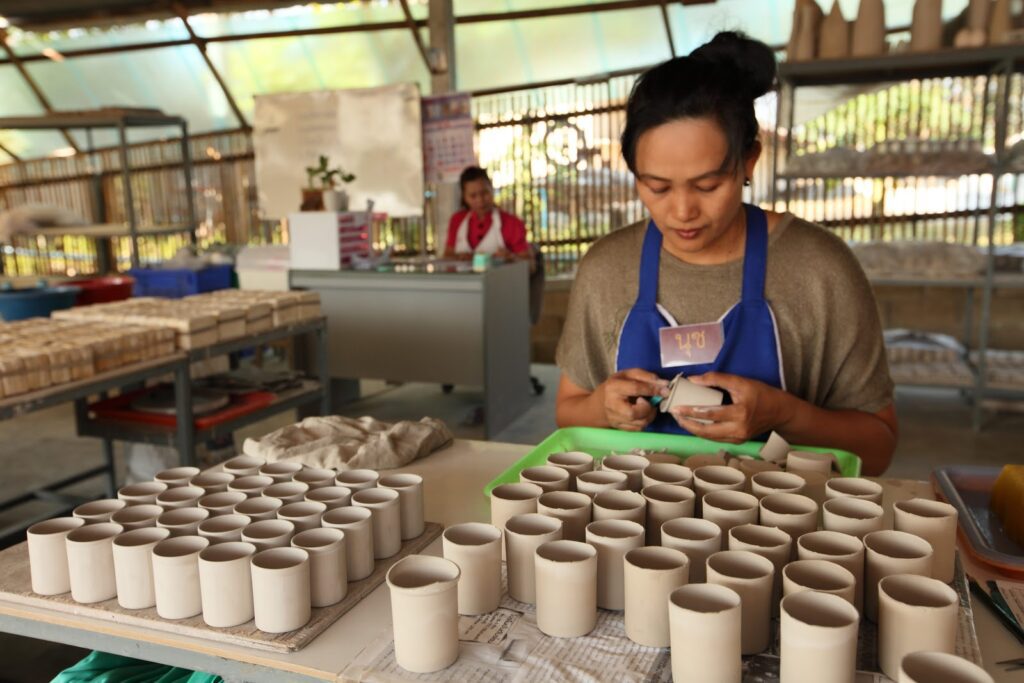
Lampang is famous for its rooster bowl thanks to the good-quality kaolin (white clay) used to make the ceramic bowl. A rooster, City of Lampang’s seal, and a ceramic bowl are the perfect pair, making it the ideal souvenir from Lampang. Besides signature rooster bowls, local ceramic artisans have a lot to offer to ceramic fans.
The rooster bowl began in China over a hundred years ago by Chinese Hakka people in Guangdong Province. But its Thai history started in 1955 at the time when Chinese descendant E Simyo Saechin found kaolin in Lampang. The Dhanabadee Ceramic Museum is Lampang’s crucial cultural landmark, as it traces the whole history of Lampang ceramic evolution on techniques and designs. While you’re watching ceramic designers at work, Dhanabadee’s traditional and modern ceramic collections beckon you to take some of them home.
Dhanabadee Ceramic Museum (Dhanabadee.com) is about a 15-minute drive from the City of Lampang
32 Watjongkam Rd, Mueang Lampang, Lampang
Opening Hours: 9 am-5 pm
Telephone: +6654 821 558-9 ext. 103
